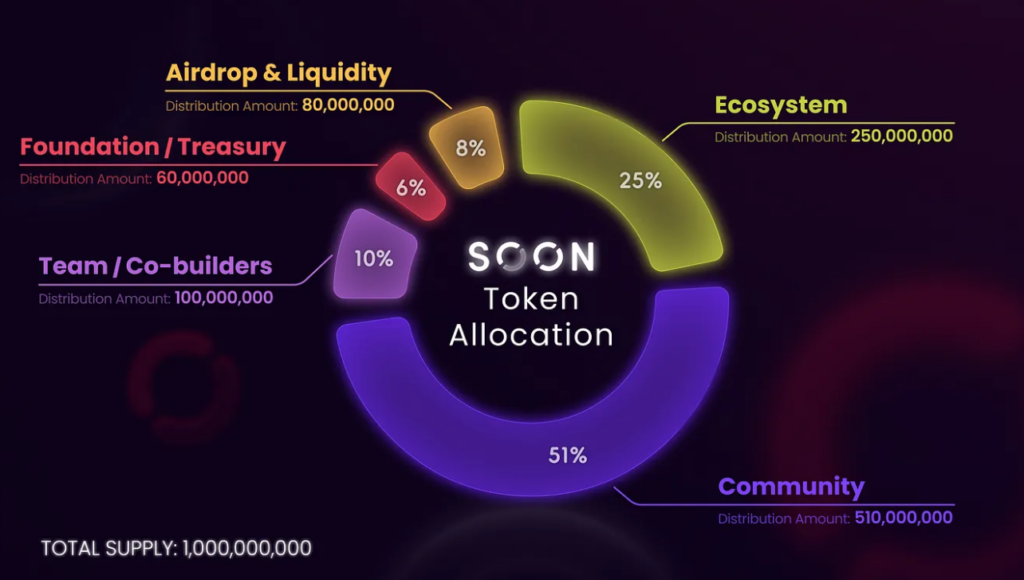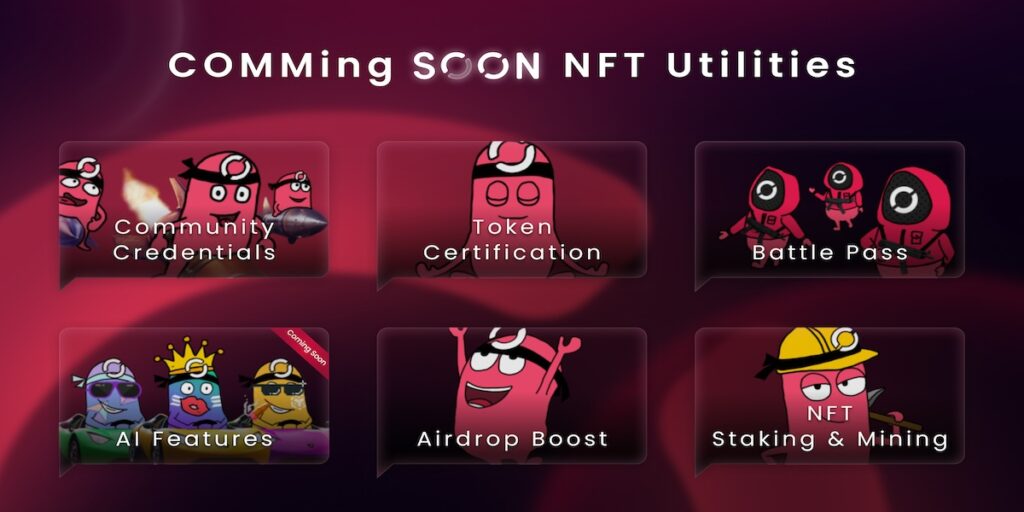If you’ve been paying attention to blockchain news, you’ve probably seen the hype surrounding NFTs and how they’re being used to fund crypto projects. NFTs started as digital collectibles but have evolved into a way to build communities and big ideas. An example is SOON (Solana Optimistic Network) who just raised $22 million through an NFT sale to support the launch of their Ethereum Layer 2 mainnet.
In this post, we’ll discuss the basics of NFT fundraising, delve into SOON’s approach, and why this technology could change the way we fund blockchain projects.
The rise of NFT fundraising
Using NFTs for fundraising offers several benefits:
- Global reach: Anyone in the world with internet access can participate.
- Instant liquidity: Buyers can trade NFTs on secondary markets, often in real time.
- Community Involvement: NFT holders become part of an inner circle, promoting the project in ways that traditional fundraisers can’t match.
Traditionally, blockchain startups have relied on venture capital (VC) financing. ICOs (Initial Coin Offerings). However, NFT-based fundraising flips the script, giving ordinary investors and long-term backers the chance to participate on the same terms as professional lenders.
COME SOON: The Ethereum L2 Project at Solana’s Speed
SOON, or Solana Optimistic Network, is a blockchain solution designed to scale Ethereum. It’s called one Ethereum layer 2 (L2) project because it sits on top of Ethereum to help process transactions faster and cheaper than Ethereum’s base layer. However, unlike traditional Ethereum Layer 2s, SOON uses the Solana virtual machine (SVM) to handle the execution of transactions.
- Solana virtual machine (SVM): A piece of software that runs smart contracts (automated blockchain programs), originally designed for Solana’s network, now adapted to power SOON on Ethereum.
Thanks to the SVM, SOON claims to process blocks in 50 milliseconds, which is significantly faster than even Solana’s 400 millisecond block times. In comparison, Ethereum transaction times are slower and can become expensive when network usage is high. SOON’s approach aims to combine the speed of Solana with Ethereum’s robust ecosystem, potentially giving users the best of both worlds.
How SOON Raised $22 Million Through NFTs
SOON made headlines for a NFT collection called “COMMING SOON.” These NFTs weren’t just digital art; they were a real stake in the future of the project. Here’s how it worked:
- Equal deal conditions for everyone: SOON offered the same terms to both large venture capital firms and individual community members.
- Token Rewards: These NFTs ultimately align with SOON’s tokenomics (how the project’s tokens are distributed), giving early supporters access to benefits like governance and potential future allocations.
By breaking the mold and offering the public the same benefits as institutional investors, SOON has raised $22 million while building goodwill with the community.
One of the main reasons why SOON’s NFT sales gained traction was the tokenomics of the IPO. In simpler terms, “tokenomics” describes how a project plans to distribute its tokens: who gets them, when, and how many. SOON’s token allocation looks like this:

- 51% for the community
- 25% for the ecosystem fund
- 8% for airdrops and liquidity provision
- 10% for team and core builders
- 6% for the treasury
This structure ensures that the majority of tokens remain in the hands of community members, giving them a true sense of ownership and control.
In a “fair launch,” tokens are not reserved exclusively for insiders before the general public can purchase. Projects such as Hyperfluid (HYPE) took a similar approach and attracted widespread attention (and billions in airdrops). This method reduces the risk of large investors dumping tokens on ordinary buyers and keeps the community more engaged. The end result? A token distribution that people trust.
NFTs as a springboard for ecosystem growth
When you think of an NFT, you might imagine a digital work of art that you can collect or trade. For the NFT holders of SOON, there may be an additional utility such as:

- Access to governance: Voting on proposals that affect the development of SOON.
- Yield agricultural opportunities: Potential to earn additional tokens for locking or “staking” your NFTs within the network.
- Early access to DApps: Some NFT collections grant first look rights to new decentralized applications (DApps).
By selling NFTs to a broad audience, SOON has effectively recruited an army of brand advocates who have a financial and emotional stake in the project’s success. This often leads to organic marketing, where community members will promote the project because they truly believe in the long-term vision.
Security and decentralization: building trust
Security is a major issue in crypto, especially when new projects raise millions. SOON’s team undergoes thorough security audits and encourages third-party reviews. A transparent process prevents exploits and builds trust among NFT holders and token investors.
Unlike projects that list tokens directly on centralized exchanges (think Binance or Coinbase), a decentralized NFT sale allows the market to set a price openly and transparently. This can potentially reduce hype-induced spikes or crashes, as buyers need to interact with on-chain protocols (smart contracts) where transactions are visible to everyone.
Cross-Chain Expansion: SOON’s Next Frontier
To really stand out, SOON doesn’t stop at just an Ethereum L2 solution. The team is working on additional solutions, such as svmBNB And Cytonicto improve cross-chain compatibility. Cross-chain solutions are tools that help different blockchains communicate with each other. In everyday terms, imagine being able to send data or tokens from Ethereum to Solana or Binance Chain without needing a dozen complicated steps.
If SOON succeeds, it will not only increase transaction speed on Ethereum; it could also improve the way data moves between multiple blockchains. This could open up new opportunities for DeFi (Decentralized Finance), AI-powered apps, and other advanced use cases that require high throughput and cheaper costs.
Looking ahead: the future of NFT fundraising
With billions of dollars flowing through NFT marketplaces, we may be on the cusp of a transformation in the way projects seek financing. Venture capital groups are still important, but large, community-driven raises like SOON’s could become the new norm. This can lead to:
- Greater decentralization: More users have a say in how projects evolve.
- Improved transparency: All transactions take place on-chain, clearly recording who received what and when.
- Broader participation: Lower barriers to entry allow people from all over the world to invest smaller amounts and still play a key role.
Of course, not everything goes smoothly. Regulatory uncertainty could be an issue as some governments consider certain NFTs to be securities and therefore subject to more regulations. Market volatility is another problem, as crypto prices can fluctuate wildly and leave new investors underwater.
But if SOON can overcome these hurdles, it will be the trailblazer for other projects looking to merge NFT sales, fast Layer 2 infrastructure, and fair token distribution.
Conclusion: a glimpse of a fairer crypto world
SOON’s $22 million NFT sale marks a major milestone for Ethereum Layer 2 projects. By leveraging Solana’s lightning-fast virtual machine and adopting a community-first token model, SOON shows what’s possible when you combine innovation with inclusivity.
If you’re new to this space, keep an eye on how NFTs evolve beyond collectibles and serve as a gateway to project ownership and management. As more initiatives follow in SOON’s footsteps – and experiment with fundraising for fair launches – we expect an increasing number of communities to rally behind crypto projects in a way we’ve never seen before.
Ready to dive deeper? Discover SOON’s official channelshop over to community forums and see how NFT-based fundraising could transform the blockchain world. As you learn more, you’ll come to see that NFTs aren’t just pixelated art; they could be the keys to tomorrow’s digital economy.
Key Takeaways:
- SOON is a Ethereum L2 solution using the Solana Virtual Machine for near-instantaneous transaction speeds.
- The project raised $22 million through an NFT sale, breaking with traditional venture capital-focused fundraising.
- 51% A large number of tokens are allocated to the community, emphasizing SOON’s philosophy of fair launch and community first.
- NFT-based fundraising offers global participation, liquidity and transparency – potential game changers for the future of crowdfunding in crypto.
- Keep an eye on cross-chain developments like svmBNB and Cytonic, which can seamlessly connect Ethereum, Solana, and other networks.
Understanding how SOON achieved these impressive NFT sales – and why it matters – will provide insight into the next wave of fundraising in the blockchain space. The era of fair launches and community-driven tokenomics may be upon us. If so, SOON’s success will likely go down in history as a crucial turning point.
[Disclaimer: This article is for informational purposes only and is not financial or investment advice. Always do your own research before making any investment decisions.]
Editor’s note: This article was written with the help of AI. Edited and fact-checked by Owen Skelton.


